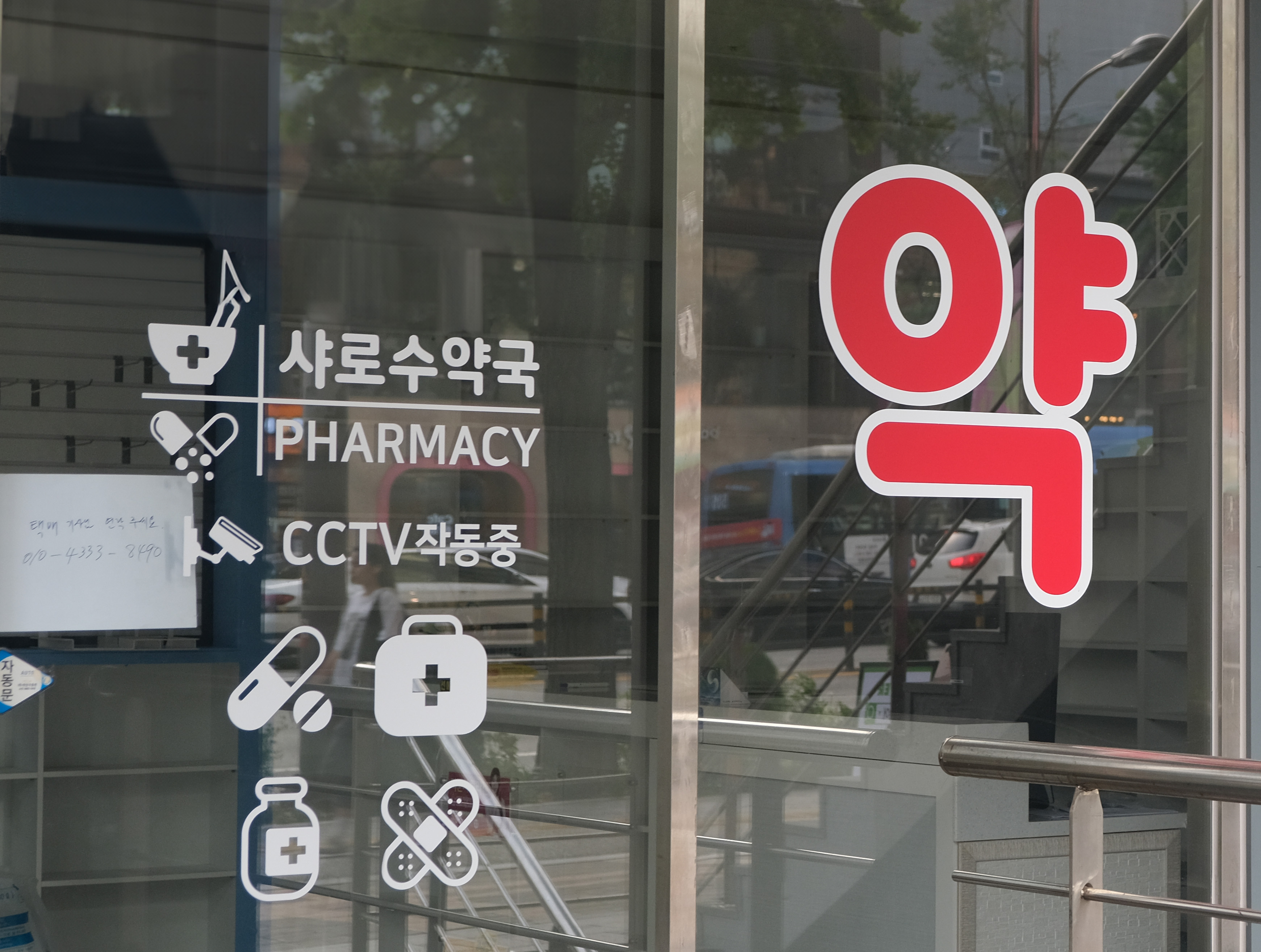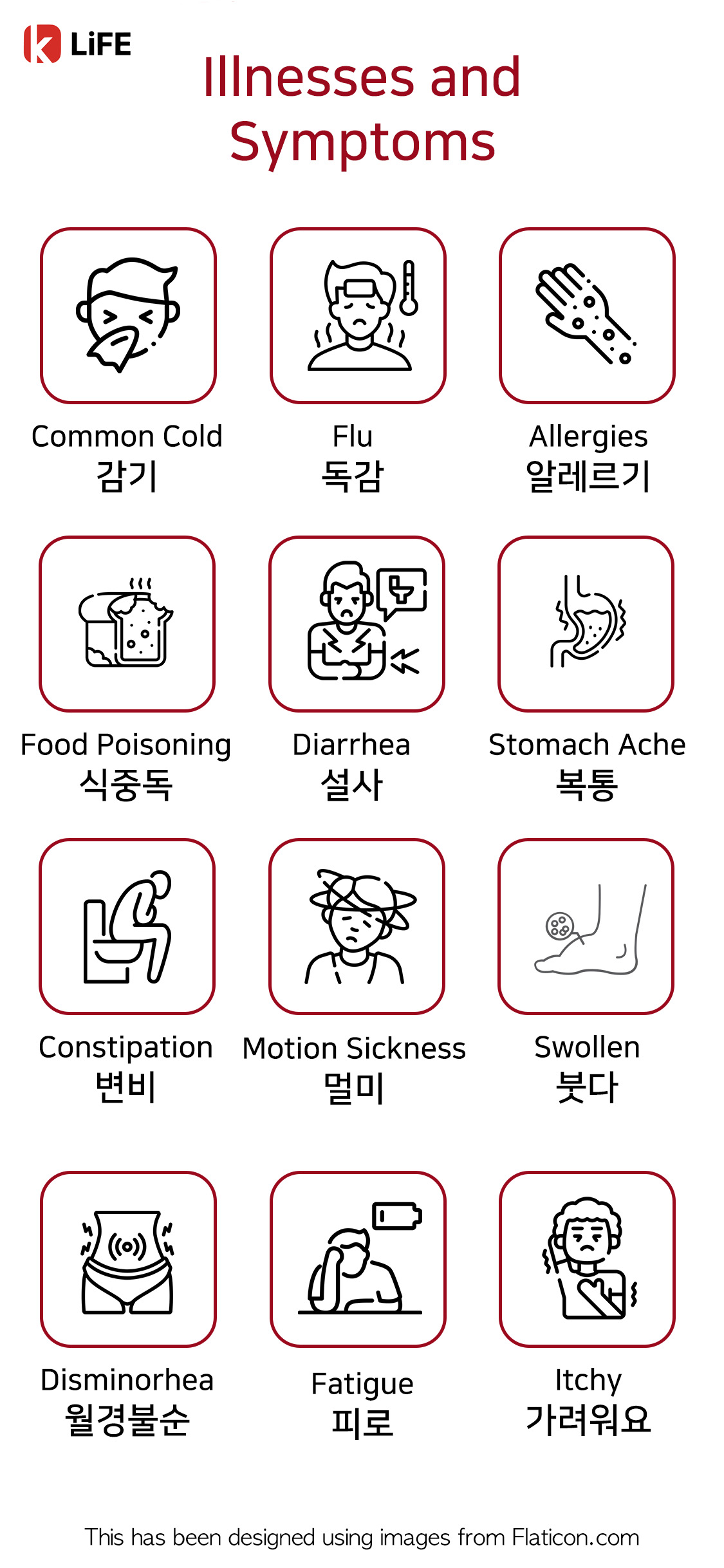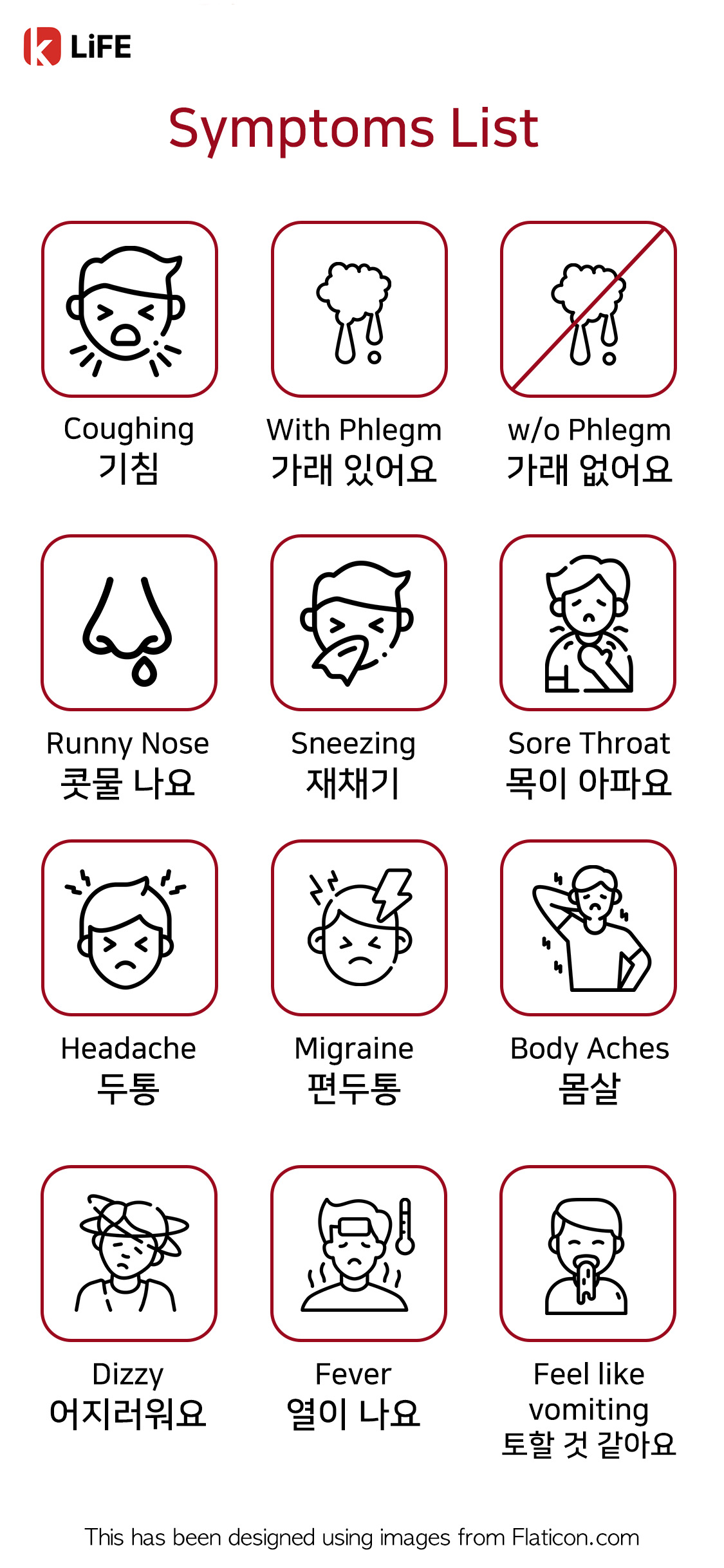How to use Pharmacies in Korea

How to use Pharmacies in Korea
Getting sick in a foreign country can be scary, especially when you don't know where to go and can't speak the language. In South Korea, understanding how pharmacies work is crucial. This article will make it easy for you. We'll help you learn the ropes, from navigating the system to overcoming language barriers, so you can get the right medication with confidence. Say goodbye to health-related worries and get ready to discover how to use pharmacies in Korea like a pro.
Jump to:
- Basics: Where to find Pharmacies in Korea
- How to Search for Pharmacies in Korea
- What to do at a Korean Pharmacy
- Common Medicines in Korean
- Common Symptoms and Illnesses in Korean
- Illnesses and Symptoms Card Icons
Basics: Where to find Pharmacies in Korea
Pharmacies in Korea are actually easy to find as there's almost one in every corner. Just search for the '약' signs as this is the Korean word for medicine. Pharmacies or chemists are called Yak-guk (약국) and Pharmacists are called Yaksa 약사. Please note that many pharmacies are closed during sundays and are usually open from 10 am to 10 pm (varies per pharmacy).
How to search for Pharmacies in Korea
- Step 1: Open the Naver Map application
- Step 2: Type in 약국 or Pharmacy on the Search bar
- Step 3: Go to the Pharmacy nearest your location
- If you want to search for a Pharmacy in a different location, you can type in the Location + 약국 or move to the map to a different location and click on "Search Here"
What to do at a Korean Pharmacy
- Step 1: Wait in line for your turn
- Step 2: If you have a prescription (처방전) from a doctor in Korea, give this to the Pharmacist
- If you do not have a prescription, tell the Pharmacist your symptoms, your illness, or specific medication you want to buy
- The Pharmacist might ask additional questions about the medicine, like how many you need or which form you would like the medicine to be in (Liquid, Capsule, Pill, etc.)
- Step 3: Wait for the Pharmacist to finish gathering the medicine. (If one of the medicines listed on the prescription is not available, they will tell you to either come back when the meds are available or go to another Pharmacy as they have to collect the prescription afterwards).
- Step 4: The Pharmacist will explain more details about the medicine (what to take, how many times to take it in a day, and for how long).
- Step 5: Pay for the medication by cash or card
- Step 6: Collect your medicine
- For prescribed medicine: Information about the medicine should be indicated on the paper bag
Common Medicines in Korean
- English Name - Pronunciation - Korean
- Allergy Medication - Aller-gi Yak -알르기약
- Birth Control Pills - Pi-im Yak - 피임약
- Cold Medicine - Kam-gi Yak - 감기약
- Cough Medicine - Ki-chim Yak - 기침약
- Ibuprophen - Ee-bu-profen - 이부프로펜
- Motion Sickness Medicine - Mol-mi Yak - 멀미약
- Pain Reliever - Jin tong je - 진통제
- Tylenol - Tylenol -타일레놀
Common Symptoms and Illnesses in Korean
- English Name - Pronunciation - Korean
- Allergy - Aller-gi - 알레르기
- Body Aches - Mom-sal - 몸살
- Common Cold - Kam-gi -감기
- Constipation - Byeon-bi - 변비
- Coughing - Ki-chim - 기침
- Diarrhea - Seol-sa - 설시
- Dysmenoria - Wol-gyeong bul-sun - 월경불순
- Hay fever - Go cho yeol - 고초열
- Headache - Du-tong - 두통
- Itchy - Ka-ryo-wo-yo - 가려워요
- Fatigue - Pi-ro - 피로
- Flu - Dok-gam - 독감
- Food Poisoning - Shik - jung- dok - 식중독
- Mosquito bites - Mo-gi Mullim - 모기 물림
- Motion Sickness - Mol-mi - 멀미
- Runny Nose - Ko mul na yo - 콧물나요
- Rhinitis - Piyeom - 비염
- Sneezing - Jae-che gi - 재채기
- Sore Throat - Mog-i apayo - 목이 아파요
- Stomachache - Bok-tong - 복통
- Phlegm - Keo-re - 거래
- Vomit - To hada - 토하다
Cards you can download and print to show to the Pharmacist or Doctor


로그인이 필요합니다.